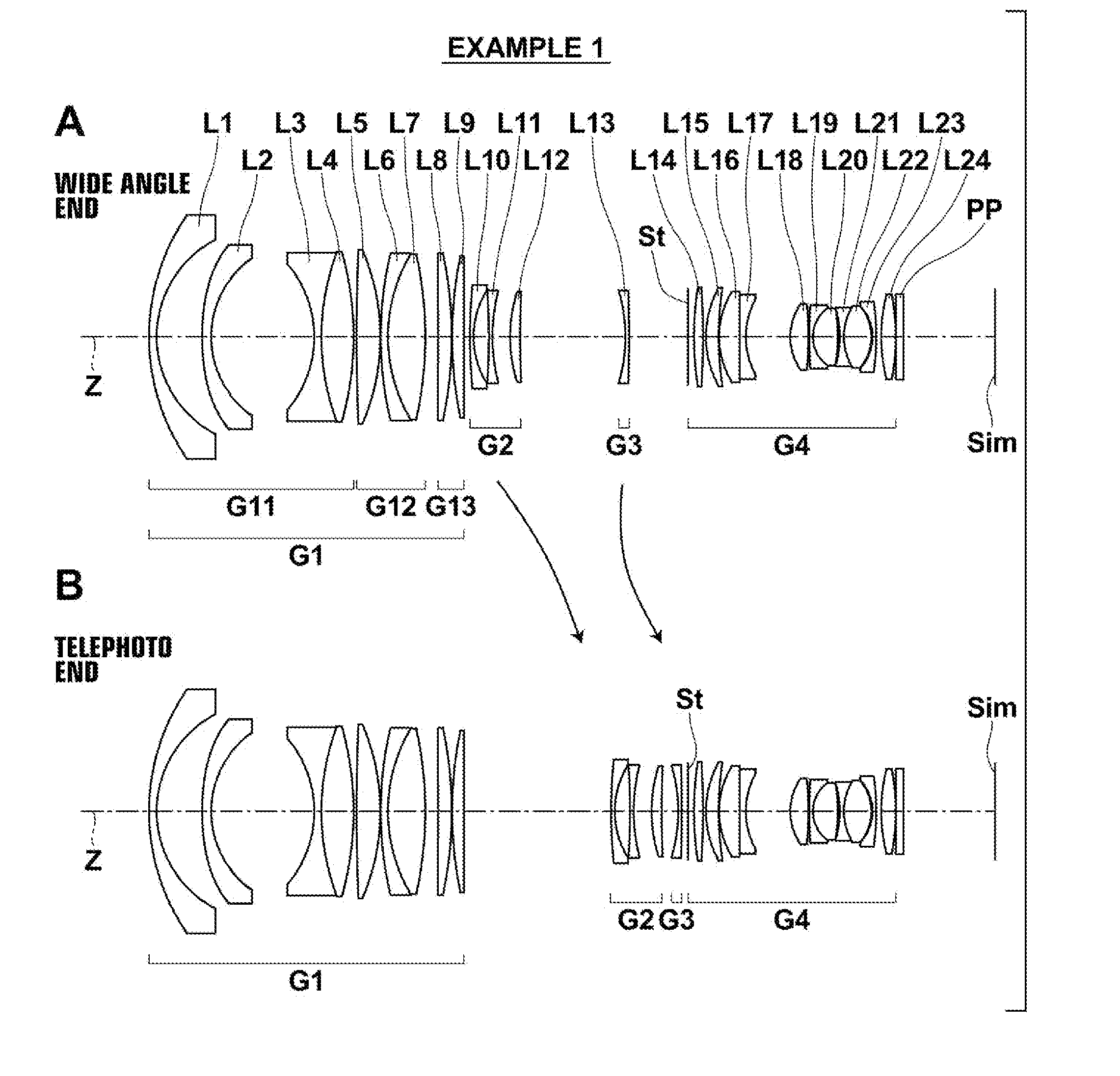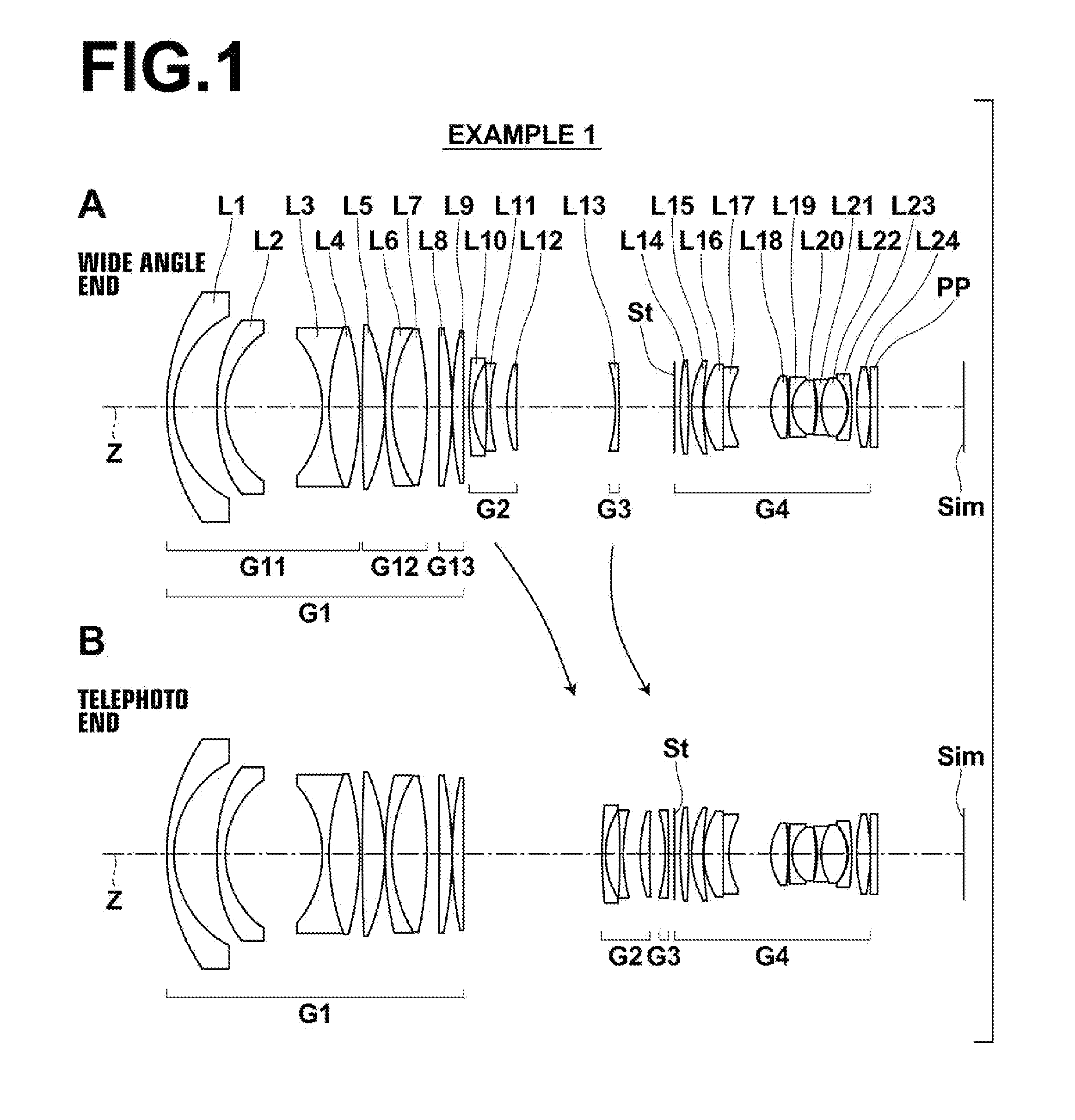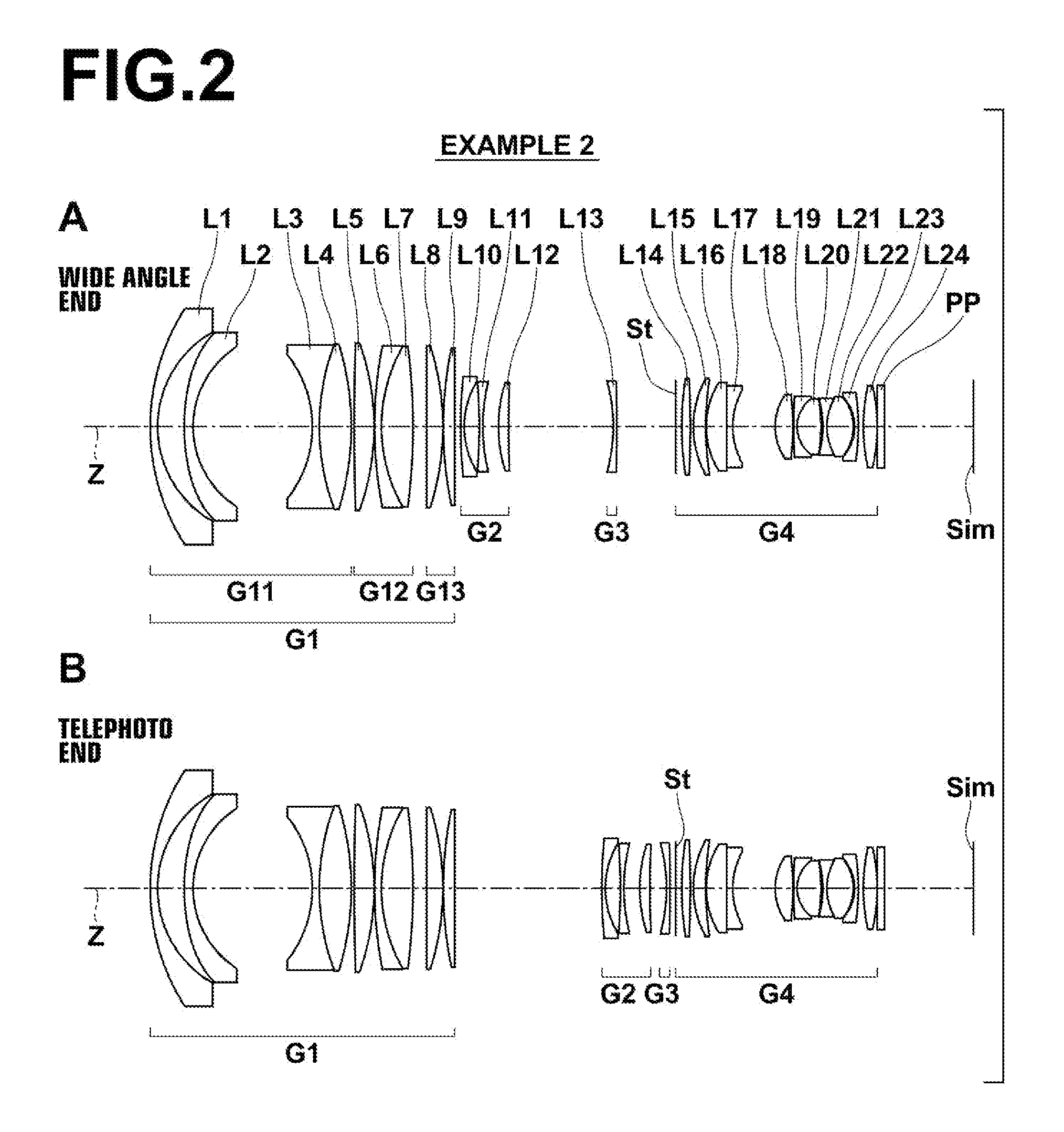Zoom lens and imaging apparatus
a zoom lens and imaging apparatus technology, applied in the field of zoom lenses, can solve the problems that the conventional lens cannot meet the demand, the image size to be imaged is not particularly large, etc., and achieve the effect of increasing the weight of the zoom lens, increasing the amount of lateral chromatic aberration, and high specific weigh
- Summary
- Abstract
- Description
- Claims
- Application Information
AI Technical Summary
Benefits of technology
Problems solved by technology
Method used
Image
Examples
example 1
[0125]As described previously, the arrangements of the zoom lens of Example 1 at the wide angle end and at the telephoto end are illustrated in FIG. 1. Note that detailed descriptions of the lens groups and each lens in the configuration of FIG. 1 have already been given, and therefore redundant descriptions will be omitted below unless particularly necessary.
[0126]Table 1 shows basic lens data of the zoom lens of Example 1. Table 1 also shows data regarding the optical member PP. In Table 1, ith (i=1, 2, 3, . . . ) lens surface numbers that sequentially increase from the object side to the image side, with the lens surface at the most object side designated as first, are shown in the column Si. The radii of curvature of ith surfaces are shown in the column Ri, and the distances between an ith surface and an i+1st surface along the optical axis Z are shown in the column Di. The refractive indices of jth (j=1, 2, 3, . . . ) optical elements from the object side to the image side with...
example 2
[0140]FIG. 2 illustrates the arrangements of lens groups of a zoom lens according to Example 2 at the wide angle end and at the telephoto end. The zoom lens of Example 2 has approximately the same configuration as that of the zoom lens according to Example 1 described above. However, the zoom lens of Example 2 differs from the zoom lens of Example 1 in four points, that an eighth lens L8 of a 13 lens group G13 is a planoconvex lens having a convex surface toward the image side, that a ninth lens L9 of the 13 lens group G13 is a planoconvex lens having a convex surface toward the object side, that a sixteenth lens L16 of a fourth lens group G4 is a planoconvex lens having a convex surface toward the object side, and that a seventeenth lens L17 of the fourth lens group G4 is a planoconcave lens having a concave surface toward the image side.
[0141]Note that the zoom lenses of Example 2 through 9 differ from the zoom lens of Example 1 in the same four points. Therefore, the above descri...
example 3
[0143]FIG. 3 illustrates the arrangements of lens groups of a zoom lens according to Example 3 at the wide angle end and at the telephoto end.
[0144]Table 7 shows basic lens data of the zoom lens of Example 3. Table 8 shows data related to zoom of the zoom lens of Example 3. Table 9 shows aspherical surface data of the zoom lens of Example 3. A through H of FIG. 13 are diagrams that illustrate various aberrations of the zoom lens of Example 3.
TABLE 7Example 3: Basic Lens DataSiRindjνdj(Surface(Radius ofDi(Refractive(Abbe'sNumber)Curvature)(Distance)Index)Number)172.22772.5001.7725049.60236.085614.893*380.49403.0001.7173629.52432.605234.0445−37.47142.3511.5174252.43675.677012.5861.6585857.457−72.73861.0008773.96936.1641.4970081.549−98.13990.15310123.01222.3501.8830040.761155.001010.3981.4970081.5412−275.35064.96713∞5.5511.4970081.5414−89.86650.15015139.98963.8451.7085655.7316∞VariableDistance 1617162.70641.2001.7395353.711829.30095.20519−228.94471.2001.5737856.132064.05825.0552147.815...
PUM
 Login to View More
Login to View More Abstract
Description
Claims
Application Information
 Login to View More
Login to View More - R&D
- Intellectual Property
- Life Sciences
- Materials
- Tech Scout
- Unparalleled Data Quality
- Higher Quality Content
- 60% Fewer Hallucinations
Browse by: Latest US Patents, China's latest patents, Technical Efficacy Thesaurus, Application Domain, Technology Topic, Popular Technical Reports.
© 2025 PatSnap. All rights reserved.Legal|Privacy policy|Modern Slavery Act Transparency Statement|Sitemap|About US| Contact US: help@patsnap.com



